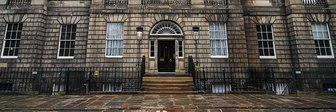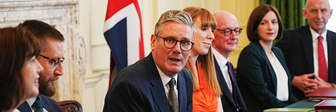Joe Twyman looks at how the battle for Number 10 has unfolded so far
With the release on Sunday of a number of new polls, it appears that the story of this surprise general election campaign has entered a third act in terms of public opinion.
Act One
The first act, in the immediate aftermath of the prime minister’s announcement on May 18, was characterised by a strong early position for the Conservatives. The momentum was very much with them and the talk was of a three-figure majority. The Conservatives were on 48 per cent while Labour languished on just 24 per cent. A gap of this size is enormous by historic standards at any time but particularly during an election campaign. The government were helped by a collapse in votes for Ukip, with the majority of the 4 million people who voted for them at the last election now supporting the Conservatives.
As this first act progressed, Labour steadily increased their share of the vote, rising from 24 per cent to 31 per cent ahead of their (official) manifesto launch. This was fuelled, at least in part, by a decline in support for the Lib Dems and a reduction in the number of 2015 Labour voters who said that they did not know they were going to vote for. The Conservatives were still in a strong position, however. It was all about Theresa May, the voters were told. “Strong and stable” was the mantra repeated again and again.
Act Two
The launch of the Labour manifesto then heralded the beginning of the second act of this election campaign story. Momentum shifted to Labour and the gap between the two parties continued to shrink, but now seemingly at an increased rate. As the opposition basked in the spotlight of publicity, Labour had a number of individual policies that proved popular in the polls. In contrast, the subsequent launch of the Conservative manifesto was a misstep for the party.
Most visibly, a u-turn from the Conservatives over social care, unprecedented in an election campaign, helped to deflate Theresa May’s “strong and stable” bubble somewhat, if not burst it completely. By May 19 the Conservative vote was back down to 43 per cent, while Labour has risen to 35 per cent — higher than they had been at any stage since the last general election. The gap between the two parties was reduced to 9 per cent.
We cannot be certain what then happened in the following days. The awful events in Manchester meant a suspension of both the election campaign and the voting intention polling. It was four days before polling resumed.
During that period, what we do know is that other tracking data that was collected, including leadership and party favourability ratings, suggested the gap between the two main parties may well have continued to narrow. That trend is most likely to have ceased as the terrible news from Manchester emerged, bringing with it the start of the third act.
Act Three
That third act was characterised, at least initially, by the concentration on the government, which is perhaps inevitable after a terror attack. Momentum has moved back to the Conservatives. When polling resumed, the gap between the two parties was 5 per cent, rising to 7 per cent in YouGov’s most recent poll.
The key question now is for how long this third act will play? Will the trend continue? Will the gap continue to grow or will it be a short-term boost that falls back once “normal service” is resumed. Walking the tightrope of public opinion in the aftermath of an atrocity is always difficult. Politicians do not often want to be seen to be capitalising on such events, at least not explicitly, and the momentum could well shift once again.
What remains clear is that much of the underlying data still currently favours the Conservatives. They still enjoy a substantial lead on issues such as security, the economy and Brexit, while Theresa May is more favoured, by some distance, over Jeremy Corbyn when it comes to who the public think would make the best prime minister.
These factors have been hugely important in pointing to previous election victories, including in 2015, and the same may well be true this time around but even with fewer than two weeks remaining things could still change. Polls are not a prediction, only ever a snapshot of opinion at present time, and the last couple of years have shown that there are few certainties left in politics and the change in trends so far have demonstrated how fluid public opinion has been during this election.
The story of the 2017 general election campaign may well have a fourth (or even fifth) act still left to unfold. And the coming days could yet mean it emerges as a thriller, a tragedy, a comedy, a farce or something else entirely.
Photo: PA





